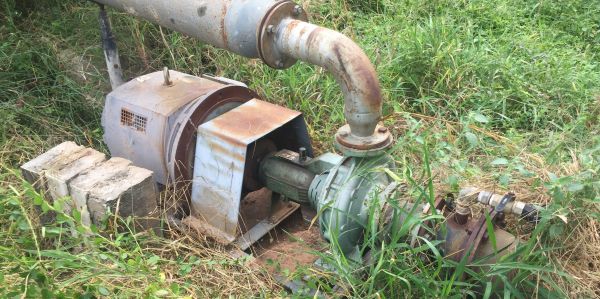A recent energy audit showed how improving the current systems can lead to energy and cost savings. The audit recommendations are:
- Replacement of the 75kW irrigation pump: with a 45kW pump including variable speed drive (VSD), allowing the new system to pump at the right pressure into different sized blocks.
- Installing a 10kW Solar PV system: to offset part of the energy consumption onsite from the irrigation system.
- Retrofit of lights: with LED in the sheds and houses.
- Upgrade the water heating system: to a solar thermal system, offsetting all the energy consumption of the system from the grid and allowing to provide all the water required by the house.
Additionally, the auditor made a number of low-cost recommendations to help reduce energy consumption on the farm, including:
- Air conditioning set point temperatures of 20°C in winter and 25°C in summer to maintain comfort levels acceptable to most occupants.
- Replace air filters as necessary in the split system.
- Consider adding external window coverings to block the sun where needed.
- Keep exterior doors and windows closed when the air conditioning system is turned on.
- Effective weather stripping on exterior doors to prevent drafts.
- Implement insulation in the ceiling of the house.
The total cost of all the projects is estimated at $40,500 with an annual saving of $7,000 and average payback of 5.8 years, reducing energy consumption and costs by 44%, with demand savings of up to 14.2kW and greenhouse gas emission reductions of 24.2 t CO2-e per year. As a participant in the Energy Savers Plus Program Extension (ESPPE) the farm is eligible for a grant of up to $20,000 to help fund the improvements.
Table 1. Costs and savings from audit recommendations.
| Recommendations |
Annual Energy Savings (kWh) |
Annual Costs Savings ($) |
Emission Savings (tCO2-e) |
Capital Cost ($) |
Payback Period (Years) |
| 45kW pump with VSD |
7,858 |
2,112 |
6.3 |
24,000 |
11.4 |
| 10kW Solar PV |
15,550 |
4,179 |
12.6 |
10,000 |
2.4 |
| Solar Hot Water |
1,528 |
387 |
1.2 |
5,000 |
12.9 |
| LED lighting |
1,095 |
376 |
0.9 |
1,500 |
5.4 |
| Total |
26,031 |
7,054 |
21 |
40,500 |
5.8 |
The farmer has implemented a 13.2kW roof-mounted grid-connected solar PV system with a 10kW inverter to offset part of the energy used onsite, but connected to the shed and house NMI instead of the irrigation NMI recommended in the audit. The savings made have been measured in a Measurement and Verification (M&V) process, as outlined in Table 2.
Table 2. Estimated and Actual energy and cost improvements.
| Metric |
Audit estimation |
M&V calculation |
Variation (%) |
| Energy Savings (kWh) |
15,550 |
18,919 |
22 |
| Cost Savings ($) |
4,179 |
1,487 |
-64 |
The greater energy savings measured compared to those estimated from the audit recommendation are aligned with the larger system implemented. However, since most of the energy generated by the solar system has been exported to the grid, lower cost savings have been achieved because the revenue from feeding into the grid is lower than the cost of using energy from the grid.
The next step for the farm is to adjust energy usage to offset as much energy consumption as possible from the grid, which would lead to further cost savings. The revenue from feeding into the grid is lower than the cost savings from using the energy onsite: for every dollar of energy exported, around $3 could be saved if the energy were consumed onsite. If the farm were to shift 18,919kWh of energy consumption per year to coincide with solar generation times, they would save an extra $2,629 per year.
From the implementation of the recommendation in the audit, the farm has reduced energy consumption by 33% and costs by 9%, with Carbon emission savings of 15.3 t/CO2-e per year.
Table 3. Pre and post implementation energy and costs improvements.
| Metric |
Pre-implementation |
Post-implementation |
Reduction (%) |
| Energy Consumption, discounting exports (kWh) |
58,221 |
39,302 |
33 |
| Cost, discounting exports revenue ($) |
15,820 |
14,333 |
9 |
An energy audit is a good investment
An energy audit is a great way for a business to cut costs and boost productivity. Find out about what’s involved in an energy audit HERE and subscribe to our bi-monthly energy e-news HERE.
If you have any energy efficiency related questions for the team get in touch at energysavers@qff.org.au.
The Energy Savers Plus Extension Program is delivered by the Queensland Farmers Federation with support and funding from the Queensland Department of Energy and Public Works.


